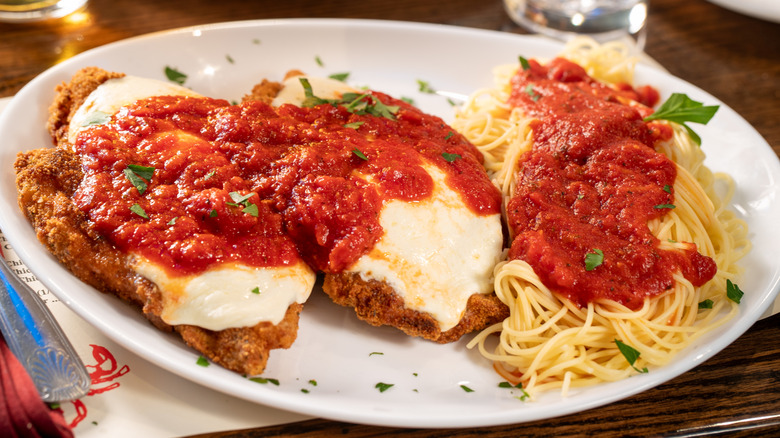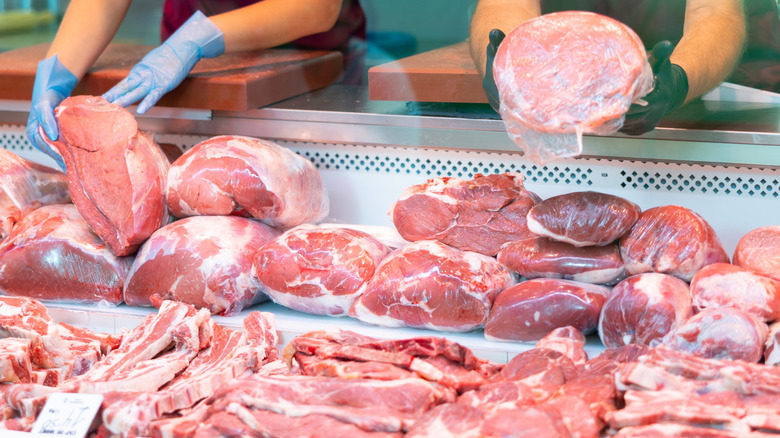The Old-School Italian Dinner That's Slowly Disappearing From Tables
There's no denying that many of the dishes that once commonly graced the plates of American tables a generation or two ago have fallen out of favor in modern cuisine, including some once-popular comfort foods no one eats anymore. This may be due to changing tastes or preferred cooking methods, health concerns, or, occasionally, factors that have little to do with the nature of the meal itself and more with how it came to be. The latter situation is primarily what's behind the disappearance of one classic Italian entree: veal Parmesan.
Unlike chicken or pork, it's not immediately apparent to some diners exactly what veal is. Unfortunately, when many discover the truth, they don't like what they find. Veal is the culinary term for a young cow (often a male dairy calf) that's only raised to 16 to 18 weeks of age before it's slaughtered. As opposed to traditional beef, veal is prized for its rich flavor and tender texture. Though it has been eaten since biblical times, over the past several centuries, veal has become a key part of many European cuisines, including Italian.
Veal parmesan isn't particularly complicated or foreign, once American diners recognize the main ingredient. Otherwise, it bears a close similarity to other Parmesan-style, Italian-American dishes, such as chicken Parmesan or eggplant Parmesan. To make it, cutlets are breaded and pan-fried, then topped with red sauce and Parmesan cheese. The cutlets are commonly served on top of or alongside pasta to provide a complete (and delicious) meal.
Animal welfare and cost concerns led to menu changes
Veal and veal Parmesan's decline in the American diet can be traced at least in part to concerns over animal welfare. Many find aspects of raising veal to be troubling, including separating calves from their mothers when they're just days old and keeping them in tight spaces to prevent movement that would toughen the meat. Others simply have a hard time knowing that the food on their plate comes from a slaughtered baby cow. Aside from ethical concerns, veal is expensive compared to mature cuts of beef and other types of meat, an increasing concern in an era of rising food prices.
Although veal is less common on restaurant menus or at the meat counter of everyday supermarkets than it once was, it's still available at many butchers or specialty meat shops. That means those willing to set aside the cost and ethical concerns can whip up delicious recipes like crispy veal Milanese with arugula. Along with the more familiar veal Parmesan, veal Milanese showcases the versatile ways veal can appear in a dish.
On your next trip to your local Italian restaurant, take a good look at the menu. If you don't find veal Parmesan amongst the deliciously saucy options, now you know why.

